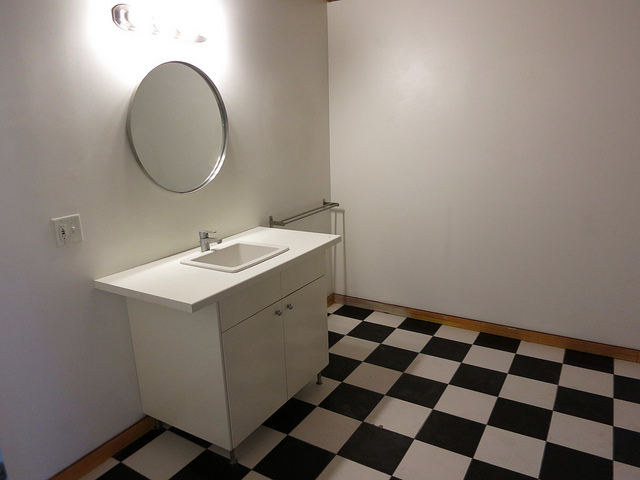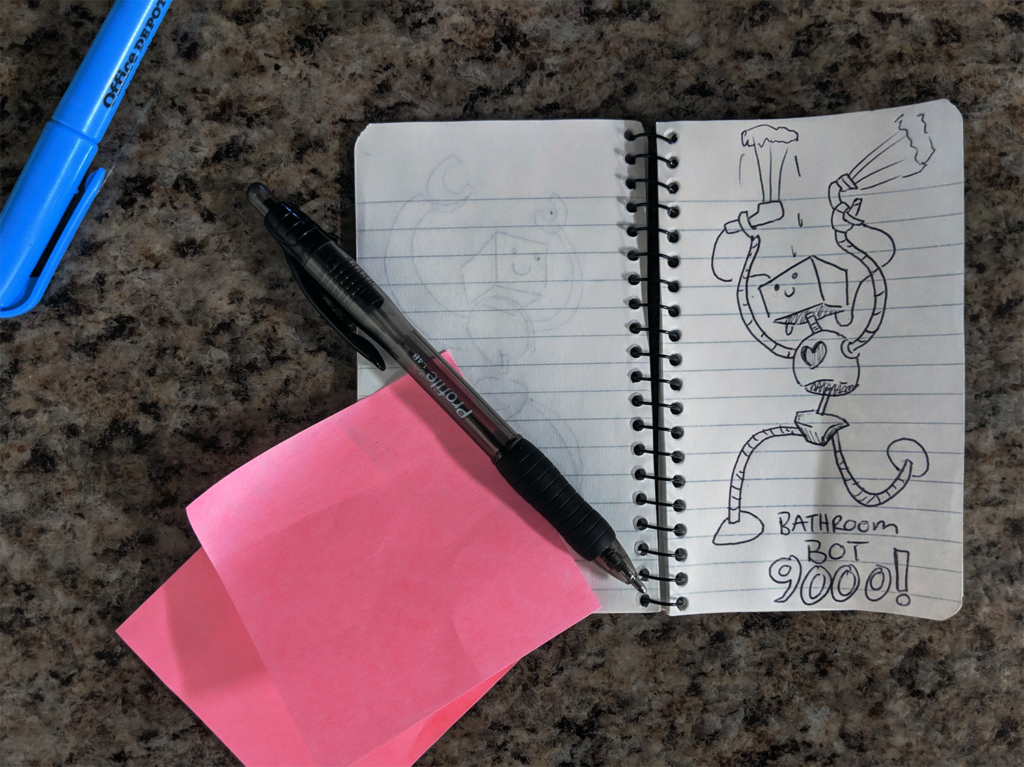
Consider the bathroom. Ceramic backsplashes, tiled floors, and hardwood surfaces welcome some of us into a new day. Others simply pass through on their final stride to sleep, and while we all may not agree on the scheduling, quite a few us confidently howl our favorite tunes into the warm haze. Now I’m sure there will be some debate here, but I’d wager that most of us would agree that we sound a little better singing in the shower. Then comes the heartbreak. We hang our towels to dry, and those brave few carry their tune outside. The chamber of echoes holding your song in key fades away, all the magic dissipates, and we’re left with our unfiltered voice. For better or worse the magic is gone. Our inhibitions ratchet up and our confidence stabilizes. So, what gives?
Your bathroom is more than you think.

Editor’s note to roommate: Please cap the toothpaste. That’s getting kinda gross.
Source-“Apartment Bathroom”- Steve Lyon (Flickr)
This is kind of misleading though. I have no idea what your bathroom looks like, and that’s actually one of the most important things. But fear not all ye with commodes which stand upon carpet, even those with tile sound wildly different. That’s kind of the point. Sound waves react to the shape, size, and the material of a given space.
But why do you sound so darn good?

Image by RobinHiggins on Pixabay
Let’s talk about reflection, one thing a sound wave seems to really enjoy doing. Say you have a bathroom full of hard surfaces (Tile/marble/wood), and you begin singing. Once you start singing all of those sounds are going to start getting reflected back into the room. You’re literally filling up the room with sounds, and by attempting to “hit the notes” you’re emulating the sound frequencies of musical notes. By doing this you’re creating an atmosphere of those frequencies. Think of it kind of like a safety net. You may not be able to sing an A# in tune, but you can likely get close. The longer you can hold that note and sing it into the room, the more you’ve built up that atmospheric safety net around you. It’s kind of like singing along with your favorite song. Feels a bit easier, doesn’t it? You have a reference point for a certain pitch, and you’re doing the same thing in the shower. You’re just doing it with reverb.
Oh, so this is just an echo, right?
Not really. Unless your bathroom is outlandishly huge, it’s likely reverb at play. Shout at a cliff a few hundred meters away and chances are your message will return to sender after some delay. One key difference between an echo and reverb is pure timing. There’s an excellent source with diagrams depicting this from The Physics Classroom.
https://www.physicsclassroom.com/mmedia/waves/er.cfm
“A reverberation is perceived when the reflected sound wave reaches your ear in less than 0.1 second after the original sound wave.”
The effect of reverberation isn’t limited to the bathroom though. In music production it can be an immensely powerful tool that creates a little more “body” to a given sound. Piano players out there may have some experience with this using the sustain pedal. That pedal opens up the strings to vibrate freely, allowing the notes to vibrate longer. Those fading notes bouncing off the inside of the piano body, that’s reverberation. Beginners(myself included) tend to abuse that pedal because it hides mistakes, and creates cohesion between notes as they come in and out. In music and production, you can manipulate reverb to audibly place instruments, fill out a sound and give it more texture, or even hide away a vocal gaff.
Well that’s neat, but so what?

Image by RobinHiggins on Pixabay
(Editor note: This model uploads these for free and just does great. Claps for Robin, ya’ll.)
It is really neat, and now comes the fun part. There’s a couple more concepts we’re going to explore, but we’re not going to do it with words. We’re going to do it with audio experiments. Now disclaimer to you music producers out there, we’re going to go through all this using digital effects but you’re not limited to that. Let’s have some fun, and find a great voice. We’re going to use some vocal samples from a great little remix-community website ccmixter.org. Many thanks go out to producer Stefan Kartenberg for the recording, and to our singer Silke Schmiemann. The sample below is the vocal recording unaltered.
We’re going to refer to these audio clips as samples from now on. This one in particular is a completely clean recording, but we still still need a bathroom, right? So let’s generate one with reverb using a computer!
Simulating steam. Extrapolating ceramic tiles. Presto!

Is this what a digital bathroom sound generator would look like? Absolutely.
Source: Editor’s notes (Obviously on his second attempt).
The nifty thing about reverb is what we can do with space. You can do a whole lot with reverb, but in this case we’re only altering the size of the room, and the time it takes to decay. The size of the room is purely the distance the sound wave has to travel before its first reflection. The decay being how long that sound might stick around for before being absorbed or dissipating entirely. Now that’s not necessarily interesting yet, but let’s ramp things up a bit. Let’s take our singer on a journey to a cathedral!
Badabing, Badaboom, this a real big room.

Image by Free-Photos on Pixabay
Ooooooooooooo, neat! A lot of decay, and a pretty large space. Did you notice all of those little extra sounds in between the words being sung? Think of that as our choral space, a bunch of little “in-between” frequencies bridging everything together just hanging in the air. That’s exactly what’s happening, and the wonderful science of sound waves behaving in space at work. If we think about this in our bathroom scenario, what benefit does this give? Well, your ears are pretty impressive. If you surround yourself in a shroud of notes, then it’s a little easier to find your tune again. It’s literally hanging there in the air just waiting for you to jump back in.
If you enjoyed this little lesson on sound waves, check out the Beyond Bones Blog for more content. And if its a real science experience you’re looking for, visit the Houston Museum of Natural Science, where you can learn about everything from sound waves to smilodons in a fun and interactive environment!
Update(09/2019): DO try this at home!
This is a special note to all you musicians and studio engineers out there. While this blog is mainly a stepping stone to introduce you to certain production/effects concepts, I have recently come across a fantastic resource on the subject. Scott Wiggins is a working studio-engineer, musician, and artist here in Texas. Overtime he’s developed a series of blogs and tutorials going over what these effects are, and how to use them effectively. His write-up on reverb is exceptional in my opinion and absolutely worth checking out.






